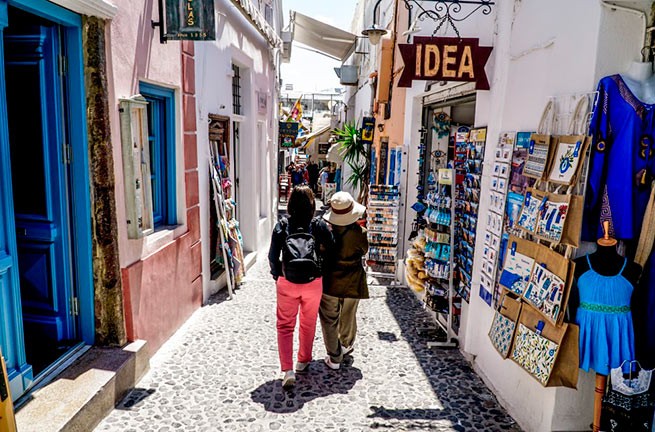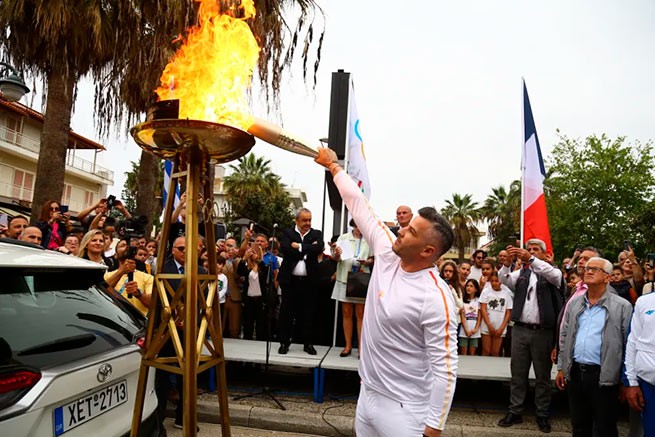A Bronze Age settlement has been discovered under Roman baths found by archaeologists in 2019 and 2020 at the site of ancient Corinth, the Greek Ministry of Culture said Wednesday.
Excavations at Chiliomodi (Corinth) confirmed the existence of a vast complex of Roman baths and revealed the existence of a Bronze Age settlement hitherto unknown to archaeologists. Experts date the settlement in the Shadow to the third millennium BC and claim that it is one of the first in the northeast of the Peloponnesian Peninsula.
In 2021, the study, led by Dr. Elenas Cork, was to continue the excavation of previously discovered Roman baths and explore the possible expansion of the adjacent market squares. During the work behind the vault of the western caldarium, archaeologists discovered the baths of the period of the reign of Emperor Vespasian. They contain a raised floor made of clay tiles and pipes made of stone, which were designed to supply water to the bathtub and drain it after use.
At the excavation site, eight ancient coins were found – one from the end of the 2nd century AD, and the rest date back to the end of the fourth – beginning of the fifth century. No less impressive are other finds of the past year: a bronze ring from the Roman era, lamps, a stone fork, a marble colonnade. Yet the most significant find in 2021 was a Bronze Age settlement, and the most unusual is a conical wine cellar that dates from the end of the 7th century.
The settlement is located 45 meters from the bath complex. It is located at a depth of about two meters and is covered with a dense layer of ceramic shards and rubble. And the wine cellar – at least scientists suspect that this is it – is a deep pit lined with clay tiles with spiral levels for descending into it.
Many artifacts were found in the settlement: jugs and vases, figurines of rams, bottles with black and red paint, fragments of vessels, clay tables with engraved decorations, grinding tools.
The public bath complex, which continues to be explored, was founded shortly before the middle of the second century AD. Then, archaeologists believe, it was expanded, repaired and completed – in the fourth century AD and in the fifth. Roman baths had warm and cold rooms (for hot and cooler baths), changing rooms, a reservoir for collecting and filtering rainwater, a water tower, and treadmills. Special rooms were intended for storing firewood.
The complex, with a total area of about 800 square meters (8611 square feet), includes 3 warm rooms (caldarii) with overhead arches and small pools (alvei). They were heated by wood-burning stoves, thanks to which they had warm floors and walls. The complex also has three prefurnia (analogs of a sauna), as well as two cold and warm bathrooms.
In the area were found cosmetic containers, stone seals, glass from the Roman era, a spectacular carnelian carved in the shape of a youth. Further excavations in the room, where in 2020 30 gold coins were found from the times of the emperors Marcian, Justin I and Justinian, helped to discover more than 120 new coins.
Archaeologists also unearthed ceramics, including vessels for cosmetics, pins and lamps, food storage facilities, and 179 coins from the late 2nd century AD. Later, a building of the late Hellenistic period was discovered – the disclosure of all its secrets is scheduled for the new year 2022. The Greek Ministry of Culture notes that the excavation of the main building of the bath complex has been completed.
https://www.youtube.com/watch?time_continue=85






More Stories
Olympic torch relay: traffic restrictions in Athens and Attica on Friday
Ancient papyrus reveals Plato's burial site
Metropolitan Chrysostom: "The Church will never recognize same-sex marriage – the issue is not closed"